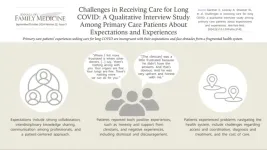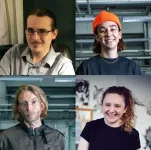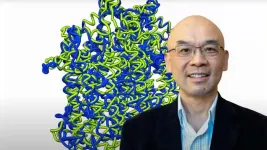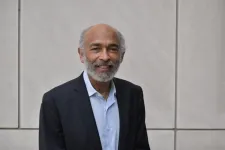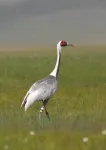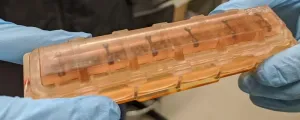(Press-News.org) Background and Goal: “Long COVID” is the continuation or development of new symptoms three months after initial SARS-CoV-2 infection. For many patients with long COVID, primary care is the first point of interaction with the health care system. This study aimed to examine the expectations and experiences of primary care patients seeking treatment for long COVID.
Study Approach: Researchers conducted 20 semistructured interviews between 2022 and 2023 with primary care patients from a long COVID triage clinic at the University of Utah. Using a phenomenological framework, the interviews focused on understanding and describing participants’ lived experiences and perceptions through open-ended, flexible questioning. The interviews were analyzed using inductive qualitative content analysis, a method that identifies themes and patterns in the data.
Main Results:
19 interviews were analyzed. Participants averaged 54 years old, and 53% were female. Most participants were infected with COVID-19 for the first time in 2020 (32%) or 2021 (47%).
Patient Expectations: Patients expected their primary care practitioners to be knowledgeable about post-COVID conditions, attentive to their individual condition, and to engage in collaborative processes for treatment.
Patient Experiences: Participants perceived their interactions with practitioners as negative when they felt dismissed or discouraged. Patients also described challenges navigating the fragmented U.S. health care system when coordinating care, treatment and testing, and payment.
Why It Matters: The study results highlight a disconnect between the expectations and experiences of long-COVID patients within the U.S. health care system. Despite facing numerous barriers and frustrations, patients show a desire to collaborate with clinicians to improve treatment outcomes.
Challenges in Receiving Care for Long COVID: A Qualitative Interview Study Among Primary Care Patients About Expectations and Experiences
Elena Gardner, MPH, et al
University of Utah Family and Preventive Medicine, Salt Lake City, Utah
PRE-EMBARGO LINK (Link expires at 5 p.m. August 27th, 2024)
PERMANENT LINK
END
Long COVID patients seek better collaboration with health care professionals
2024-09-23
ELSE PRESS RELEASES FROM THIS DATE:
EHR messaging before first visit fosters a stronger patient-physician connection
2024-09-23
Inspired by the VA’s My Life, My Story project, this initiative used the Electronic Health Record (EHR) to strengthen the patient-physician relationship. The initiative invited patients to share personal narratives before their first visit with a new primary care physician. Conducted at a regional clinic affiliated with the University of Wisconsin-Madison, the project involved sending secure messages to patients, asking them to describe what they wanted their health care team to know about them as a person. The majority of patients responded ...
SETI AIR announces Cosmic Consciousness residency recipients
2024-09-23
September 23, 2024, Mountain View, CA – The SETI Institute's AIR program announced the recipients of its Cosmic Consciousness residency for mid-career and emerging artists:
Open (Mid-Career) category: The recipients are the artist team of Bart Kuipers, Julie Michele Morin, and daniela brill estrada, with their project Exoplanet Poetry. The artists plan to create a book of poems using an AI trained on chemical data from imagined extraterrestrial sources. The book will be presented as a multi-sensory chemical experience, making ...
Australian crater could offer fresh insight into Earth’s geological history
2024-09-23
A probable crater stretching more than 370 miles, or 600 kilometers, across the heart of Australia could reshape our understanding of Earth’s geological history.
Researcher Daniel Connelly and Virginia Commonwealth University’s Arif Sikder, Ph.D., believe they have found evidence to support the existence of MAPCIS – the Massive Australian Precambrian-Cambrian Impact Structure -– which is a nonconcentric complex crater that could provide new insights into the geological and biological evolution of our planet.
“Working on the MAPCIS project has been an incredible journey,” said Sikder, an associate professor in the Center for ...
New study raises questions about validity of standard model of solar flares
2024-09-23
Solar flares are extremely intense events that occur in the Sun’s atmosphere, lasting anywhere from a few minutes to several hours. According to the standard flare model, the energy that triggers these explosions is transported by accelerated electrons that hurtle from the magnetic reconnection region in the corona to the chromosphere. As the electrons collide with the chromospheric plasma, they deposit their energy in the plasma, which is heated and ionized as a result. They also cause intense radiation in several ...
Paving the way for new treatments
2024-09-23
A University of Missouri researcher has created a computer program that can unravel the mysteries of how proteins work together — giving scientists valuable insights to better prevent, diagnose and treat cancer and other diseases.
Jianlin “Jack” Cheng from Mizzou’s College of Engineering and his student, Nabin Giri, have developed a tool called Cryo2Struct that uses artificial intelligence (AI) to build the three-dimensional atomic structure of large protein complexes, work recently published in Nature Communications. ...
Dream discovery: Melatonin's key role in REM sleep revealed
2024-09-23
A significant breakthrough in the understanding of sleep mechanism opens new promise for treating sleep disorders and associated neuropsychiatric conditions: Scientists have pinpointed the melatonin receptor MT1 as a crucial regulator of REM (Rapid Eye Movement) sleep.
REM sleep is crucial for dreaming, memory consolidation, and emotional regulation. In the brain, the melatonin MT1 receptor affects a type of neuron that synthesizes the neurotransmitter and hormone noradrenaline, found in an ...
Research quantifying “nociception” could help improve management of surgical pain
2024-09-23
The degree to which a surgical patient’s subconscious processing of pain, or “nociception,” is properly managed by their anesthesiologist will directly affect the degree of post-operative drug side effects they’ll experience and the need for further pain management they’ll require. But pain is a subjective feeling to measure, even when patients are awake, much less when they are unconscious. In a new study, MIT and Massachusetts General Hospital (MGH) researchers describe a set of statistical models that objectively quantified nociception during surgery. Ultimately, they hope to help anesthesiologists optimize drug dose and minimize post-operative ...
How cranes navigate their complex world
2024-09-23
The researchers used tiny GPS tracking devices to follow the movements of 104 cranes in Africa, Asia, and Europe. These devices included unique solar-powered GPS leg bands developed by scientists from MPI-AB. The tracking data revealed the impressive migrations that cranes undertook. Some of the migratory routes exceeded 6,400 km of travel round trip and required crossing barriers such as the Alps or Himalaya mountain ranges, the deserts of the Arabian peninsula, or the Mediterranean Sea. In addition to the tracking study, the researchers also developed a statistical framework that revealed how the cranes’ movements relate to aspects of the ...
New origami-inspired system turns flat-pack tubes into strong building materials
2024-09-23
Engineers at RMIT University have designed an innovative tubular structural system that can be packed flat for easier transport and pop up into strong building materials.
This breakthrough is made possible by a self-locking system inspired by curved-crease origami — a technique that uses curved crease lines in paper folding.
Lead researchers, Dr Jeff (Ting-Uei) Lee and Distinguished Professor Mike (Yi Min) Xie, said bamboo, which has internal structures providing natural reinforcement, inspired the tube design.
“This self-locking system is the result of an intelligent geometric design,” said Lee from RMIT’s School of Engineering. ...
Low gravity in space travel found to weaken and disrupt normal rhythm in heart muscle cells
2024-09-23
Johns Hopkins Medicine scientists who arranged for 48 human bioengineered heart tissue samples to spend 30 days at the International Space Station report evidence that the low gravity conditions in space weakened the tissues and disrupted their normal rhythmic beats when compared to earth-bound samples from the same source.
The scientists said the heart tissues “really don’t fare well in space,” and over time, the tissues aboard the space station beat about half as strong as tissues from the same source kept on Earth.
The findings, ...
